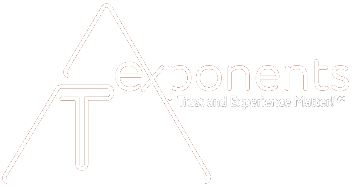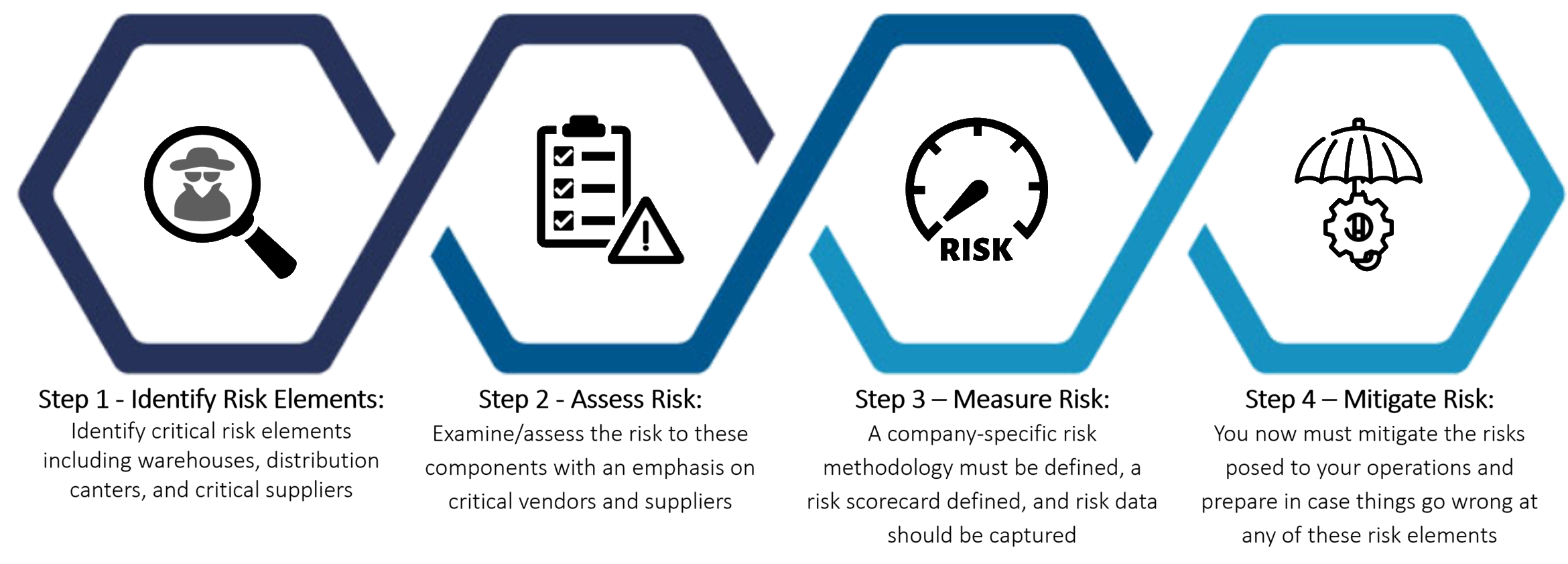Common Strategies to Assess, Manage and Mitigate Supply Chain Risk
Companies worldwide have been affected by recent supply chain issues. From large factory shutdowns in China due to Covid-19, to recent port backups in Southern California, or the rising number of factory fires across the world, the increasingly globalized nature of our supply chains means that the potential number of risks and threats to our supply chains are greater than ever before.
As a result, Supply Chain Risk Assessment and Management has become an even more critical component of a company’s overall Supply Chain Strategy. Effective Supply Chain Risk Assessment practices enable a business to be more flexible, resilient, and agile in response to both known and unknown risks imposed on the Supply Chain. In conjunction with Risk Mitigation tactics and techniques, they can eliminate or lower risks down to an acceptable level for the business.
In this post we explain the basics of Supply Chain Risk Assessment and Management. In addition, you can also review prior T Exponents blog posts, white papers and case studies on this topic. For example, T Exponents helped a global transportation and manufacturer of medium and heavy commercial vehicles reduce cost, increase revenue, reduce lead times, and improve customer service through a Supply Chain Strategy, Assessment, and Optimization, in our Latin America Supply Chain Case Study.
What is Supply Chain Risk Assessment?
Supply Chain Risk Assessment is a set of practices developed by companies to identify both internal and external risk or threats, and to investigate the potential impact they could have on the business. Identifying and evaluating potential supply chain risks is important to avoid supply disruption.
According to the International Organization for Standardization (ISO), risk is an effect of uncertainty on your business or company's objectives.
Breaking Down Risk
Risk can be broken down into internal risks or external risks. Internal risks are risks that can be controlled, such as cost estimates, changes in key personal, or a lack of contingency planning to name a few. External risks are risks that a company cannot control, such as political unrest in the supplier’s country, natural disasters that slow down production, or a change in currency rates that could affect the value of an international contract.
One recent example is Geographic Risk (e.g., Off-Shore Risk). The chart below from the July 11, 2019 edition of The Economist shows that a large % of the global market share for key products and selected industries is made or produced in one country/region (i.e., China or ASEAN), putting many retailers at risk. For many retailers, even products sourced locally, or in Europe may still be impacted by supply chain disruptions in Asia because many products are still packaged or processed in that region.
Additionally, risks can be classified as either known risks or unknown risks. Known risks are the risks that are or can be identified as there is a chance to measure or manage those risks over time. These can be managed by identifying risks beforehand and by building a strong supply chain risk management team and lastly by monitoring risks that have been discussed before. Unknown risks are those that are impossible to measure or quantify. The best way to manage unknown risks is by creating strong defenses and a risk-aware culture.
Basic Types of Supply Chain Risk
Financial: Financial Risk includes budget overruns and unexpected or unfavourable changes in the exchange rate
Legal: Legal Risk is when companies or businesses fail to meet terms and conditions
Geographic: Geographic Risk is when companies put all their supply chain capabilities into a single region (e.g., China, ASEAN). This can be catastrophic if there is a geopolitical event or environmental disaster
Geopolitical: Geopolitical Risk includes the wide array of risks associated with conflicts or tensions between states
Environmental: Environmental Risks affecting the supply chain include climate change, excessive emissions or waste, water inaccessibility, and deforestation
Human: Human Risk occurs when a worker is ill or injured and due to poor decision-making.
Scope and Schedule: Scope and Schedule Risk occurs due to natural disasters that cause production delays or damage to products and facilities
Planning: Planning Risk is one of the common risks that affect the supply chain. To avoid this risk a company or an organization should hire the right person with the right skills and estimate logistic needs accurately
Steps to Assess, Manage, and Mitigate Supply Chain Risk
To reduce or manage supply chain risk, the first step is to identify all the risks that could affect a business, and then recognise elements of the supply chain which are affected so that they can be monitored. Next, it must assess the risk, measure the risk (including capturing risk data), and finally mitigating risk. Understanding these three steps is fundamental to managing or decreasing supply chain risk fully.
Identifying Risk Elements: Check and determine the segments of a supply chain and sub-tiers that should be actively monitored. This should include warehouses, distribution canters, and critical suppliers
Assessing Risk: The next step is to examine and assess the risk to these components with a heavy emphasis on critical vendors and suppliers (e.g., facility security, exposure to natural disasters, geopolitical events, etc.)
Measuring Risk: To measure risk a company's specific risk methodology must be defined. A risk Scorecard should be developed for assessing the risk profile of a company or an organization. In addition, risk data must be captured
Mitigating Risk: Once you have identified the risk, assessed the risk, and measured the risk, you now must mitigate the risks posed to your operations. You need to prepare your organization in case things go wrong at any of these risk elements
More About Risk Mitigation
Risk mitigation is the business or company practice of creating plans and taking possible actions to reduce threats given to an organization. Monitoring and assessing the supply chain is incomplete without a risk mitigation process. A few risk mitigation strategies are accepting risk, avoiding risk, and controlling risk.
For additional risk assessment, management, and mitigation information, please check out this T Exponents Case Study where we used our Supply Chain Disruption, Risk Management and Contingency Planning methodology to help a large beverage/ specialty food retailer replace an at-risk provider and mitigate future risks that were predicted with the expansion of their business: Multinational Corporation Strategic Vendor/ Supplier Replacement and Contingency Management Playbook.
Conclusion
Supply chain risk assessment is crucial for businesses to manage their exposure to risk. Building programs for both managing unknown and known supply chain risks with planning, preparation and technology will carve a smooth pathway for organizations and companies to manage and assess supply chain risk.
For a more in depth look at the risks a Supply Chain can face, as well as strategies for how your company can prepare itself, see the following White Pages:
Final Thoughts
For more information on Supply Chain Assessment, Management, and Mitigation approaches for your business, please click the link below:
DRIFT IQ LLC DBA T EXPONENTS™ PRIVATE, PROPRIETARY AND CONFIDENTIAL. COPYRIGHT © 2022 T EXPONENTS™. ALL RIGHTS RESERVED.



